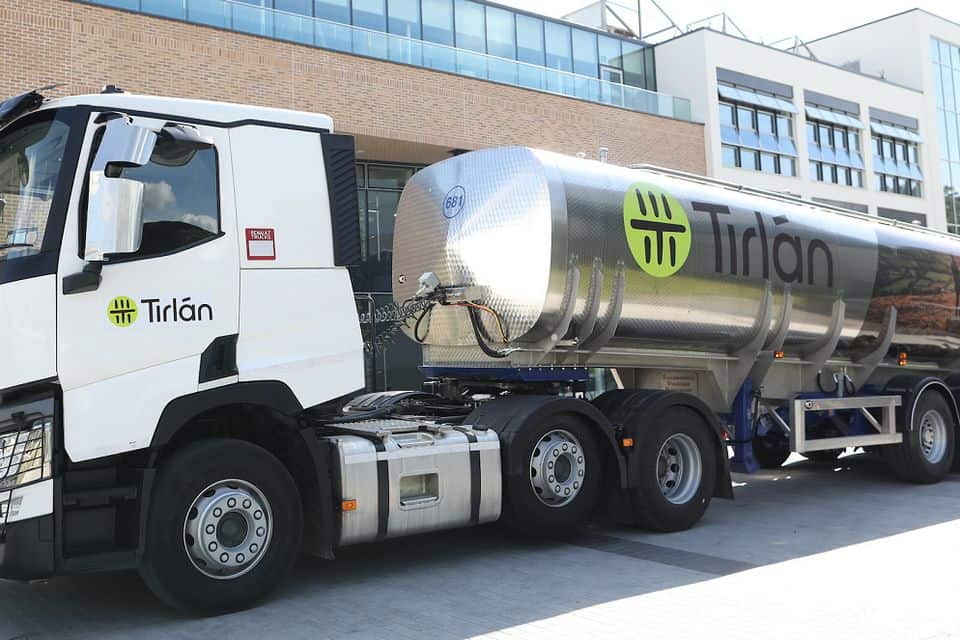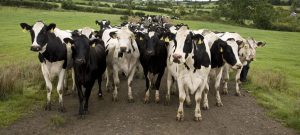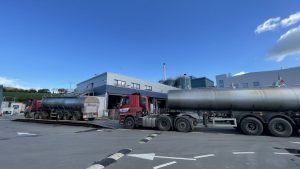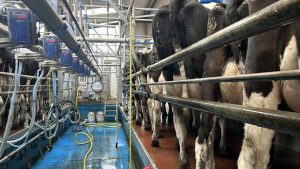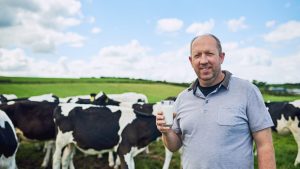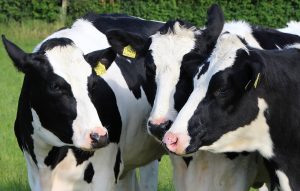
Tirlán, is the latest milk processor to announce a sharp cut to its milk price for August supplies.
The cut comes in the wake of a series of milk price reductions this year and after news last week the that Ireland’s Nitrates Derogation, relied upon by many dairy farmers will be cut from next year.
Tirlán will pay a total of 33.08c/L (including VAT) for August creamery milk supplies at 3.6% butterfat and 3.3% protein.
It’s August milk price of 33.08 cpl (including VAT) is down 2.5 cpl from July and consists of the following:
Base milk price of 32.58 cpl (including VAT);
Sustainability Action Payment of 0.5 cpl (including VAT) to all qualifying suppliers.
The Tirlán said its total price for August creamery milk, based on LTO constituents of 4.2% butterfat and 3.4% protein, is 36.00 cpl (including VAT).
Tirlán Chairperson John Murphy said inflation, higher interest rates and ongoing destocking continue to affect buyer behaviour.
“Strong domestic milk production in China and weaker economic data from that region has also negatively impacted market sentiment. The margin pressures facing milk suppliers in most parts of the world are likely to curb global milk supply, although the timing remains uncertain.
“Having supported milk price strongly through the peak milk supply months, we will continue to focus on providing as much of a buffer as possible against very weak markets. The Board will continue to review developments on a monthly basis.”
Earlier today, Kerry Group said its milk price for August milk supplies would be 35c/L (Vat Inc) at 3.30% Prot/3.60% Bfat consisting of a base price of 32c/L (Vat Inc) and a Milk Contract payment of 3c/L (Vat Inc) on all qualifying milk volumes.
Based on Kerry’s average milk solids for August, it said the milk price return inclusive of VAT and bonuses is 39.80c/L.
Kerry said short to medium-term outlook on commodity dairy continues bearish with little sign of any demand-side correction in the offing.
“The supply side across the major exporting regions has been more robust than anticipated year-to-date with signs of more significant softening just becoming apparent,” it said.
Earlier this week, Lakeland Dairies decided on a 1.5c/L cut to the price for milk supplied in August, which its Board feels is representative of current market conditions.
A price of 34c/L, at 3.6pc butterfat and 3.3pc protein, will be paid for August milk in the Republic of Ireland. The average payout for August milk is 38c/L.
Outlook
There are signs that milk production in Europe and US is starting to fall on the back of lower prices, but dairy demand remains uncertain, according to StoneX dairy market analyst John Lancaster.
However, Lancaster, who is head of EMEA Dairy and Food Consulting at StoneX, told the Farming Independent he thinks the impact of lower prices is starting to be seen in key producing nations.
“Our expectation is that as we go into September and October, Europe as a whole moves from being positive year on year to negative year on year,” he said.
“We’re also seeing an impact from the low milk prices in the US and a reduction in the overall herd size. That will feed trough in the medium and possibly into negative production growth in early next year.”
Despite this, he said the dairy demand is still “a major question”.
“Over the last two to three years, there’s been a big push there for more domestic milk production and right now you’re looking at 65-70pc self-sufficiency,” Lancaster said.
“From this side of the world, we think of China just as a massive consumer of imported dairy products, but they also have a very significant dairy industry of their own.”
Added to this, he said, was poor current economic conditions there that are driving an overhang of commodity products in the Chinese market, particularly whole milk powder.
However, Lancaster said the futures market isn’t indicating that prices get to 2016 levels, but he said at a global level, the cost of production has significantly increased versus 2016.
“In 2016, the European Commission ended up buying over 300,000t of skimmed milk powder and then when they stopped buying, the price dropped below that intervention level.
“So we’re not in that kind of situation. At least right now, there’s nothing kind of communicating that way.”
However, Lancaster said the cost of production is significantly higher now than in 2016.
